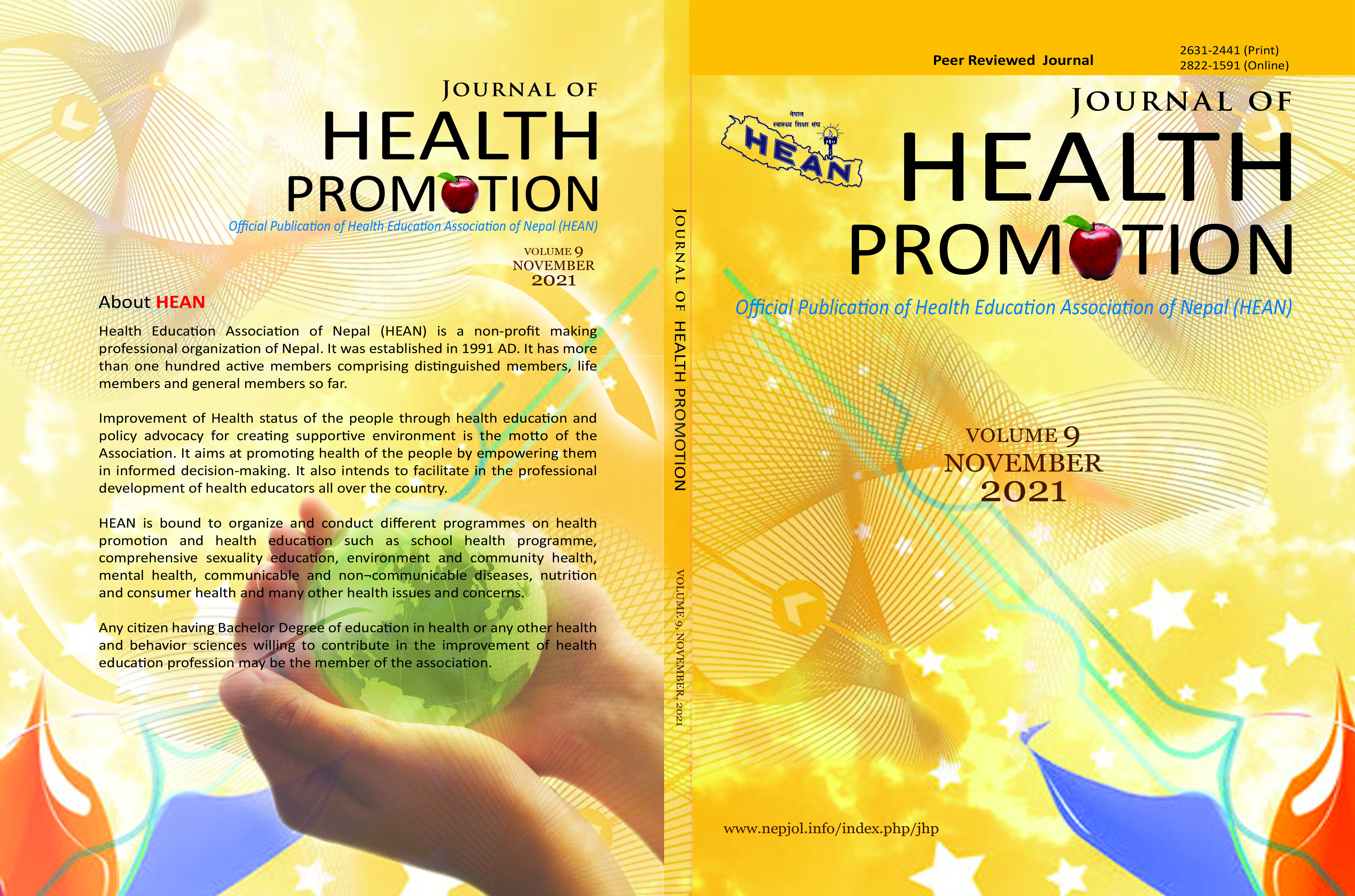The smoking behavior of women of reproductive age in Nepal
DOI:
https://doi.org/10.3126/jhp.v9i01.40958Keywords:
Education, married women, Nepal, smoking, wealth statusAbstract
Smoking, the leading cause of preventable deaths worldwide, which is more detrimental to women not only increases the chances of infertility and miscarriage, but hastens the onset of menopause and causes women to be more susceptible to depression, decreased bone density, cataracts, and skin diseases. This paper investigates the smoking behavior and factors influencing smoking among women of reproductive age in Nepal. The study used secondary data from the 2016 Nepal Demographic and Health Survey. A total of 12,862 women of the reproductive age group were covered in the survey. The association between smoking and the explanatory variables was first assessed in bivariate analysis using the Chi-square test. The associations were further explored using multivariate logistic analysis. Nearly two-fifths (38%) of women were aged 15-24 years. Overall, 8% of women used tobacco products (smoking/chewing). Multivariate analysis showed that women aged 35 and above were almost seven times (aOR=6.52, CI=4.75-8.94) to be smokers than younger women. Separated/divorced/widowed women were nearly twice (aOR=1.86, CI=1.14-3.01) as likely to be smokers than their counterparts. Education is a significant predictor of smoking as women having primary (aOR=0.65, CI=0.54-0.78) and secondary/higher education (aOR=0.21, CI=0.16-0.26) were less likely to smoke than women with no education. Dalit women were nearly two times more likely to be smokers than higher caste Brahmin/Chhetri. Similarly, the richest and richer women were less likely to smoke than the poorest women. Age, education, marital status, caste/ethnicity, and wealth index were significant determinants of smoking among women. Hence, tobacco control interventions need to be focused on women of higher age groups and uneducated and poorer women.
Downloads
Downloads
Published
How to Cite
Issue
Section
License
© Health Education Network (HEAN)
Authors are required to transfer their copyright to the Health Education Association of Nepal (HEAN).
The materials of this publication may be reproduced, reviewed and translated, acknowledging the source "Journal of Health Promotion".




